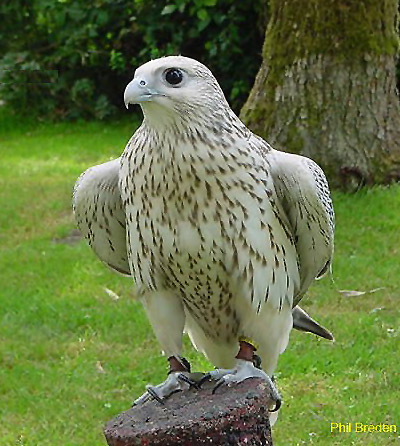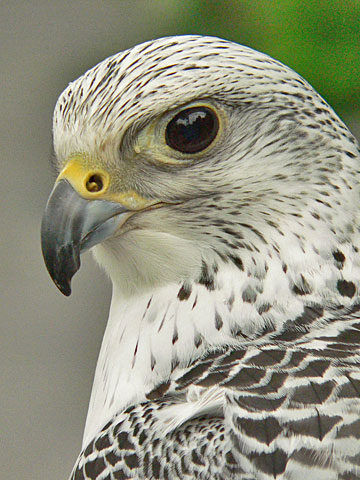

The Gyrfalcon eats mostly ptarmigan, but many other prey species have been recorded
including fulmars, gulls, jaegers, ducks, geese, Rough-legged Hawk, Short-eared Owl, sparrows, buntings, and redpolls.
The female Gyrfalcon regularly stores prey during the breeding season, generally within 100 meters (328 feet) of the nest.
Little is known of food-caching outside the breeding season; in one case, a Gyrfalcon was seen retrieving a frozen ptarmigan and chipping
off pieces of meat to eat, in mid-winter in the Aleutian Islands.
Gyrfalcon is pronounced as "JER-falcon." The name probably evolved from
Old Norse, but linguists do not completely agree on the specific origin of the word.
The Gyrfalcon sometimes bathes in runoff water of still-frozen rivers.
Mostly birds, especially ptarmigan. Also consumes mammals, ranging in size from voles to hares.


